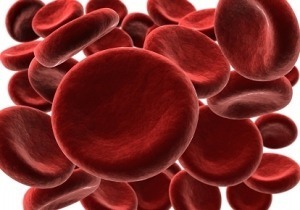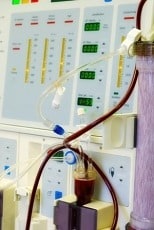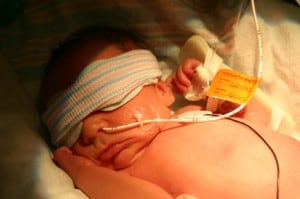Human factors and adherence to CLABSI prevention practices

A human factors engineering-based intervention aimed at the modification of task behavior to increase adherence to best practices and the reduction of central line-associated bloodstream infections (CLABSI)” Drews et al (2017). Abstract: Objective: A human factors engineering-based intervention aimed at the modification of task behavior to increase adherence to best practices and the reduction of […]
Administration of intramuscular injections to the ventrogluteal site

The objective of this study was to identify the frequency of use of the ventrogluteal site and the level of nurses’ knowledge of administering an intramuscular injection to this site” Sari et al (2017). Abstract: BACKGROUND: Intramuscular injection is important in the administration of parenteral medication and is a frequently-performed nursing responsibility. OBJECTIVE: The objective […]
Management of diabetic patients during parenteral nutrition administration
The goal of this paper is to provide the latest evidence and expert recommendations for management of hospitalized patients with diabetes or hyperglycemia receiving enteral (EN), parenteral (PN) nutrition support or, those with unrestricted oral diet, consuming meals on demand” Drincic et al (2017). Abstract: PURPOSE OF REVIEW: The goal of this paper is to […]
CLABSI treated with antibiotic-lock rescue therapy
This is the first report on successful salvage of a long-term device colonized by multi-resistant Chryseobacterium indologenes” Corbella et al (2017). Abstract: We report the case of a catheter-related bloodstream infection caused by Chryseobacterium indologenes, an uncommon and multi-resistant pathogen, in a pediatric patient with a long-term vascular access device placed for chemotherapy treatment. The […]
Risk-adjustment model for CLABSI using electronically available comorbidities

Our risk-adjustment model for CLABSI using electronically available comorbidities demonstrated better discrimination than did the CDC model. The CDC should strongly consider comorbidity-based risk adjustment to more accurately compare CLABSI rates across hospitals” Jackson et al (2017). Abstract: BACKGROUND: Risk adjustment is needed to fairly compare central-line-associated bloodstream infection (CLABSI) rates between hospitals. Until 2017, […]
PICC complications reduced with nurse-led peripherally inserted central catheter program

We attribute our low rates of major complications to a nurse-led expert insertion team, standardized care and maintenance protocols, high insertion volumes, novel catheter material and continuous quality-improvement initiatives that are implemented and evaluated regularly. We conclude that the considerable benefits PICCs provide to patients are attained with a low risk of major complications” McDiarmid […]
Decade of UK OPAT activity reviewed in this article

This study shows that OPAT is safe, clinically efficacious and acceptable for treating a wide range of infections with high levels of patient satisfaction and substantial cost savings” Durojaiye et al (2017). Abstract Outpatient parenteral antimicrobial therapy (OPAT) has evolved relatively slowly in the UK. This study describes the OPAT service based in a large […]
Ultrasound investigation of positional vascular access devices
We used ultrasound to assess the cause of blockage on movement, and degree of tip movement, of 62 venous and 21 radial arterial catheters. In both venous and arterial catheters, blockage was predominantly caused by impingement of the catheter on the vessel wall, with catheter kinking and spasm of the vessel also seen” Hebbard and […]
Treatment of candida tropicalis biofilm formation

This study was conducted to investigate the process of biofilm formation by C. tropicalis and the antifungal activity of liposomal amphotericin B (LAB) against both forming-biofilms and developed-biofilms using time-lapse imaging” Kawai et al (2017). Abstract: Candida species bloodstream infection such as candidemia remains a significant with high morbidity and mortality. Bloodstream infections caused by […]
Review of dialysis vascular access hemorrhage

Our conclusion is that death due to dialysis vascular access hemorrhage is an uncommon, catastrophic, but potentially preventable event if the right policies and procedures are put in place” Jose et al (2017). Abstract: Bleeding from dialysis vascular access (arteriovenous fistulas, arteriovenous grafts, and vascular catheters) is uncommon. Death from these bleeds is rare and […]
Patient safety – double or single nurse checks to prevent medication errors?
Our study demonstrates that nurses use double checks before administering high-alert medications. Use of a double check increases certain error detection rates in some circumstances, but not others” Douglass et al (2017). Abstract: Study objective: The use of a double check by 2 nurses has been advocated as a key error-prevention strategy. This study aims […]
Evaluation of fluid responsiveness in critically ill patients
In this review, we discuss why fluid responsiveness based on the Starling mechanism did not work well in the clinical setting” Ueyama and Kiyonaka (2017). Abstract: Fluid overdose can be harmful in critically ill patients. Since central venous pressure (CVP) is currently considered to be an inappropriate indicator of preload, much attention is being given […]
Antimicrobial use in Australian haemodialysis outpatients

To determine the burden of bloodstream and local access-related infections and the prescribing patterns for intravenous antibiotics in Australian haemodialysis outpatients” Worth et al (2017). Summary: Background: Patients with chronic renal failure who require haemodialysis are at high risk for infections. Aim: To determine the burden of bloodstream and local access-related infections and the prescribing […]
Chest radiography or ultrasonography for confirming central venous catheter placement

Ultrasonography is faster than chest radiography for confirming correct central venous catheter placement and ruling out pneumothorax” Long and April (2017). Abstract: Ultrasonography is faster than chest radiography for confirming correct central venous catheter placement and ruling out pneumothorax. However, it is less accurate for ruling out malposition, and chest radiography should be obtained in […]
Review of CLABSI outcomes in the neonatal population

In our Neonatal Intensive Care Unit (NICU), the CLABSI rate was continually increasing. It became evident that new practice guidelines were necessary to reduce the CLABSI rate in this vulnerable population” Glenn (2017). BACKGROUND: Catheter-associated bloodstream infection (CLABSI) in the neonatal population is a major source of morbidity and mortality. The disruption of skin and […]
Home infusion care offers strong promise in future healthcare models

As the overhaul of the healthcare payment system gains momentum, the home infusion care delivery model offers strong promise as one in a set of approaches that can improve care and lower costs” Polinski et al (2017). Abstract: BACKGROUND: As the U.S. healthcare payment system shifts from volume to value, identifying care approaches that improve […]
Transitioning from landmark to ultrasound guided central venous catheterization

The aim of this study is to illustrate the experience with ultrasound in CICC placement at a high-volume oncological center, in a country where the landmark technique is standard” Oom et al (2017). Abstract: INTRODUCTION: Centrally inserted central catheter (CICC) insertion is a commonly performed procedure that may give rise to different complications. Despite the […]
Nephrologist-driven tunnelled dialysis catheter insertion
In multivariate analysis, male gender was associated with poor catheter survival, for primary insertions (p = 0.015, HR 0.62) and diabetes was associated with TDC infection (p = 0.024, OR 1.1)” Nikam et al (2017). Abstract: METHODS: All patients who underwent TDC insertion by nephrologists from October 2013 to June 2016 were included. TDC survival […]
Correct position of cuffed tunneled catheters via the iliac vein

In case of doubt, the correct placement of large-bore catheters via iliac access route should be verified by means of appropriate imaging before hemodialysis is performed” Büttner et al (2017). Abstract: In selected cases, cuffed tunneled catheters via the iliac vein are implanted as a last resort access for hemodialysis. To monitor the correct position, […]
Medication error prevention list includes smart infusion pumps
This article reviews research done on the various aspects of medication errors. The research work done on prescribing errors, transcribing errors, dispensing errors, administration errors and discharged summaries errors have been examined” Riaz et al (2017). Abstract: Medication errors occur every day causing injury to the patients and even deaths. The health care professionals are […]
Outcome of locking ports with normal saline every three months

Our data suggest that locking ports with normal saline every three months is not associated with an increased risk of lumen occlusion” Solinas et al (2017). Abstract: INTRODUCTION: Patients with cancer need stable venous access using central vascular devices like central venous ports and peripherally inserted central catheters that can be used for a wide […]
Ethanol lock therapy an important CLABSI treatment strategy

Ethanol lock therapy (ELT) with systemic antimicrobial therapy is a promising therapy for catheter-related infection (CRI)” McGrath et al (2017). Abstract: BACKGROUND: Ethanol lock therapy (ELT) with systemic antimicrobial therapy is a promising therapy for catheter-related infection (CRI). The impact of ELT timing on treatment efficacy and costs is unknown. [ctt link=”aQpub” template=”1″]ReTweet if useful… […]
Impact of arm selection on the incidence of PICC complications
This study indicated fewer complications with right-sided insertion irrespective of hand dominance” Paquet et al (2017). Abstract: INTRODUCTION: The aim of this study is to determine if right arm peripherally inserted central catheters (PICCs) experienced fewer complications while controlling for gender, hand dominance, history of malignancy, dwell time and catheter size. [ctt link=”Tw62K” template=”1″]ReTweet if […]
Outcome of CVP monitoring with PICC lines

We undertook a systematic review and meta-analysis with the aim to investigate whether the difference between PICC- and CICC-measured CVP is not significant” Sanfilippo et al (2017). Abstract: INTRODUCTION: The central venous pressure (CVP) is the most commonly used static marker of preload for guiding fluid therapy in critically ill patients, though its usefulness remains […]
Which management structures impact on CLABSI reduction

Providing hospitals with the tools they need to successfully measure management structures that support clinical care provides a powerful approach that can be leveraged to reduce the incidence of HAIs experienced by patients” McAlearney et al (2017). Abstract: BACKGROUND: Healthcare-associated infections (HAIs) impact patients’ lives through prolonged hospitalization, morbidity, and death, resulting in significant costs […]
Systematic surveillance programme for PICC complications
The goal of this new interdisciplinary project was to introduce PICCs in an academic hospital, with an embedded interdisciplinary surveillance programme for both infectious and noninfectious outcomes” Lo Priore et al (2017). Abstract: AIMS OF THE STUDY: In our hospital, a previous attempt to introduce peripherally inserted central catheters (PICC) was aborted after a nonsystematic […]
Plastic bronchitis a serious complication of long-term vascular access

This case identifies plastic bronchitis as a rare yet serious complication of long-term large bore vascular access when a vessel-sparing approach is not possible” Carter et al (2017). Abstract: BACKGROUND: Despite peritoneal dialysis being the preferred mode of renal replacement therapy in neonates and infants, long-term haemodialysis may be necessary in a minority of patients […]
Circuit life span of continuous renal replacement therapy in critically ill patients

The aim of this study was to describe the efficacy, security and viability of an anticoagulation system with continuous infusion of unfractionated heparin (UFH) versus one without any type of anticoagulant using 0.9% physiological saline washings, in critically ill patients with continuous renal replacement therapy (CRRT) and different risks of bleeding” Sanz Ganuza et al […]
Options for paracetamol overdose treatment with acetylcysteine

We aimed to assess the expected acetylcysteine concentration time profiles following delivery of modified acetylcysteine regimens proposed for those at high and low risk of hepatotoxicity. In addition, we will determine acetylcysteine concentrations post-cessation of abbreviated infusions” wong et al (2017). Abstract: PURPOSE: Paracetamol overdose is common and is treated with acetylcysteine to prevent the […]
Central venous access devices for parenteral nutrition and CLABSI risk

The data presented in this systematic review are not sufficient to establish whether patients receiving PN are more at risk of developing CRBSI than those who do not. Future PN studies needs to adjust for baseline imbalances and improve quality and reporting” Gavin et al (2017). Abstract: BACKGROUND: Central venous access devices (CVADs) are used […]

